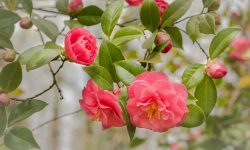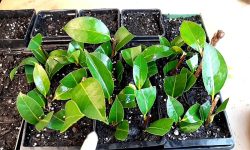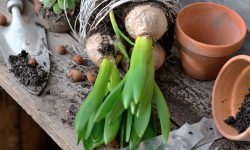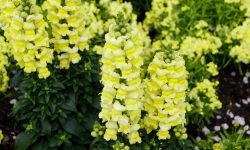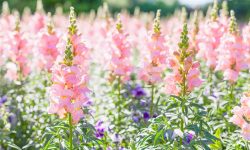Woodland Phlox is a stunning perennial that brings delicate color and natural charm to shaded garden areas. Its soft, fragrant blooms and lush green foliage create a serene woodland atmosphere, making it a favorite among gardeners seeking both beauty and low-maintenance elegance. Thriving in partially shaded environments, Woodland Phlox adds vibrancy to garden beds, borders, and naturalized landscapes while attracting pollinators like butterflies and bees, enhancing ecological diversity.
Caring for Woodland Phlox requires understanding its seasonal needs, from proper watering and fertilization to pruning and disease prevention. By mastering these care techniques, gardeners can ensure prolonged flowering, healthy growth, and long-term resilience. With attentive management and thoughtful placement, Woodland Phlox transforms shaded spaces into lively, colorful havens that bloom reliably year after year.
Understanding Woodland Phlox
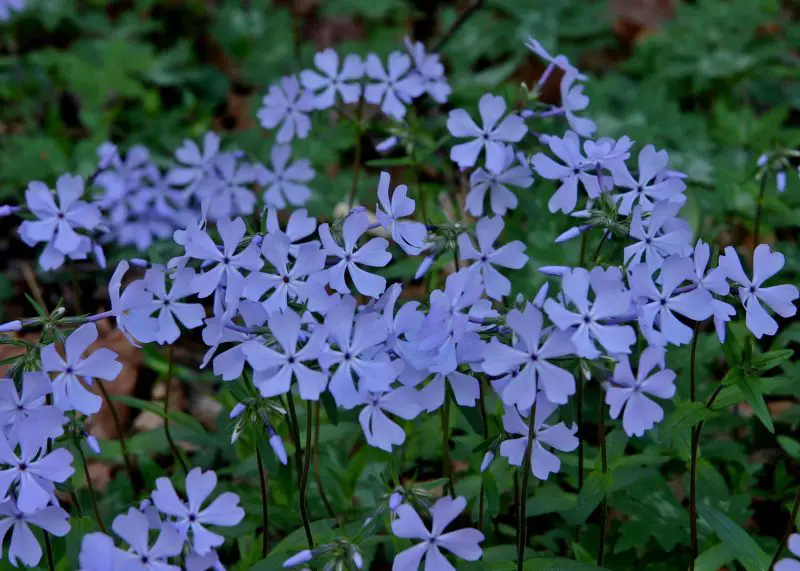
Woodland Phlox, also known as Phlox divaricata, is a shade-loving perennial native to North American woodlands. It is prized for its charming clusters of star-shaped flowers that bloom in shades of blue, lavender, or white during spring. The plant’s low-growing, spreading habit makes it ideal for naturalizing in woodland gardens, under trees, or along shaded borders. Its fragrant flowers attract pollinators such as bees and butterflies, contributing to a healthy and balanced garden ecosystem.
This perennial is not only visually appealing but also ecologically valuable. Woodland Phlox thrives in well-drained, humus-rich soils with consistent moisture, reflecting the conditions of its native woodland habitat. Understanding these natural growth requirements helps gardeners replicate ideal conditions in their own gardens. The plant’s spreading nature allows it to form dense mats over time, which suppresses weeds and provides ground cover while maintaining a delicate and airy appearance.
Additionally, Woodland Phlox requires minimal intervention once established, but attention to its seasonal needs ensures longevity and abundant flowering. Observing its growth patterns, monitoring for pests or diseases, and maintaining proper soil and light conditions all contribute to sustained health. By gaining a comprehensive understanding of Woodland Phlox, gardeners can create thriving, vibrant plantings that enhance both the visual appeal and ecological health of shaded garden spaces.
Benefits of Growing Woodland Phlox
Woodland Phlox offers significant aesthetic benefits, making it a popular choice for shaded and woodland gardens. Its delicate clusters of star-shaped flowers bloom in soft blues, lavenders, and whites, creating a serene and visually appealing atmosphere. The plant’s low-growing, spreading habit forms a natural groundcover, adding texture and depth to shaded areas where other flowering plants may struggle. Its subtle fragrance further enhances garden enjoyment, making Woodland Phlox a sensory delight that enriches outdoor spaces.
Beyond its beauty, Woodland Phlox contributes ecologically by attracting pollinators such as bees, butterflies, and hummingbirds. These beneficial visitors support the reproduction of other garden plants while promoting biodiversity. By planting Woodland Phlox, gardeners encourage a thriving ecosystem in shaded areas, improving overall garden health. Its ability to naturalize and form dense mats also helps suppress weeds, reducing maintenance and creating a more sustainable garden environment over time.
Additionally, Woodland Phlox is a hardy perennial that requires relatively low maintenance once established. Its resilience to moderate shade, adaptability to woodland-like conditions, and minimal fertilizer requirements make it ideal for gardeners seeking long-lasting, sustainable blooms. Combining visual charm, ecological benefits, and ease of care, Woodland Phlox is a versatile and valuable addition to any garden. By understanding and leveraging these benefits, gardeners can create vibrant, low-maintenance landscapes that flourish year after year.
Soil Preparation and Choosing the Right Location
Proper soil preparation is fundamental to the successful growth of Woodland Phlox. This perennial thrives in humus-rich, well-drained soils that retain consistent moisture without becoming waterlogged. Before planting, amend the soil with organic matter such as compost or leaf mold to enhance fertility and drainage. Testing the soil pH is also helpful, as Woodland Phlox prefers slightly acidic to neutral conditions. Adequately prepared soil ensures strong root development, healthy foliage, and abundant spring blooms, setting the foundation for a thriving garden display.
Selecting the right location is equally important for Woodland Phlox. This plant naturally grows in shaded woodlands, so replicating similar conditions in the garden promotes optimal health. Choose areas with partial to full shade, especially under trees or along shaded borders. While Woodland Phlox can tolerate some morning sun, exposure to harsh afternoon sunlight may cause leaf scorch and reduce flowering potential. Proper spacing is also essential to allow airflow between plants, preventing overcrowding and minimizing the risk of fungal diseases such as powdery mildew.
Combining careful soil preparation with thoughtful location selection ensures Woodland Phlox establishes quickly and thrives over multiple seasons. Mulching around the base helps retain soil moisture, regulate temperature, and suppress weeds, further supporting plant health. By replicating its natural woodland habitat, gardeners can create a resilient, visually appealing planting that flourishes year after year. A well-chosen site with nutrient-rich, well-drained soil allows Woodland Phlox to display its delicate blooms and attractive foliage, enhancing shaded areas and supporting a balanced garden ecosystem.
Watering Needs for Woodland Phlox
Woodland Phlox requires consistent moisture to thrive, especially during its establishment and active flowering periods. While it prefers well-drained soil, prolonged dry conditions can stress the plant, resulting in smaller blooms and weaker foliage. Watering should be done deeply at the base of the plant rather than overhead to avoid wetting the leaves, which can promote fungal infections such as powdery mildew.
During periods of low rainfall or extended heat, supplemental watering is essential to maintain root hydration. Applying a slow, steady soak ensures water penetrates the soil deeply, encouraging strong root development. Shallow, frequent watering should be avoided, as it can lead to weak, shallow roots that reduce the plant’s resilience. Mulching around the base of Woodland Phlox helps retain moisture, suppress weeds, and regulate soil temperature, providing a stable environment for healthy growth.
Understanding the plant’s natural woodland habitat helps guide watering practices. Woodland Phlox evolved to grow in moist, shaded environments where soil remains consistently damp but never waterlogged. Replicating these conditions in the garden ensures robust growth, prolonged flowering, and vibrant foliage. By combining proper watering techniques with mulching and monitoring, gardeners can support the long-term health and beauty of Woodland Phlox, allowing it to flourish year after year.
Fertilizing Woodland Phlox
Proper fertilization promotes strong growth and abundant blooms in Woodland Phlox but should be applied judiciously. Over-fertilizing, especially with high-nitrogen products, can encourage excessive leafy growth at the expense of flowers. A balanced, slow-release fertilizer applied in early spring provides essential nutrients gradually, supporting stem strength, flower production, and overall plant health.
Organic amendments such as well-rotted compost or manure also enrich the soil while improving structure and drainage. Incorporating these into the planting area not only supplies nutrients but enhances water retention and aeration, crucial for healthy roots. Avoid applying fertilizer directly to the foliage to minimize the risk of burn or disease development.
Seasonal fertilization, combined with proper watering, ensures Woodland Phlox maintains vigor throughout the growing season. Regular observation of plant health helps gardeners adjust feeding as needed to support bloom quality and resilience. By providing the right nutrients at the right time, gardeners can enjoy consistent flowering, lush foliage, and a thriving, long-lasting perennial display in shaded garden spaces.
Seasonal Care Guide for Woodland Phlox
Spring Care
Spring is the prime growing and flowering period for Woodland Phlox. Begin by removing any winter debris, fallen leaves, or dead stems from around the plants. This improves air circulation, reduces disease risk, and creates a tidy environment for new growth. Deadheading early blooms encourages the plant to redirect energy into further flowering, extending the vibrant display throughout spring. Applying a thin layer of organic mulch helps retain soil moisture, suppress weeds, and stabilize soil temperature, all crucial for young shoots emerging from the ground.
Fertilization during early spring supports strong stems and abundant flowers. Use a balanced, slow-release fertilizer or incorporate compost into the soil to enhance nutrient availability. Monitor soil moisture carefully; water deeply but infrequently to encourage robust root development while avoiding waterlogged conditions. Inspect plants regularly for early pest signs, including aphids or slugs, and take prompt action if needed. By combining consistent care, proper nutrient management, and attention to plant health, gardeners can ensure Woodland Phlox thrives, producing dense, colorful blooms and maintaining overall vigor throughout the spring season.
Summer Care
Summer requires careful management of water, sunlight, and plant health. Woodland Phlox thrives in partial shade but can suffer from scorching if exposed to intense afternoon sun. Keep soil consistently moist, particularly in hotter regions, while avoiding wetting the foliage to prevent fungal diseases like powdery mildew. Mulching remains important, as it retains moisture, regulates soil temperature, and suppresses weeds. Pruning lightly after peak bloom maintains a neat appearance and encourages secondary flowering.
Regular inspection is essential for pest management. Look for signs of leaf damage or insect activity, including spider mites or slugs, and address issues promptly with safe, targeted treatments. Reduce fertilization in mid-summer to prevent excessive leafy growth that can overshadow flowers. Maintaining proper spacing between plants ensures air circulation, reducing humidity-related problems. By adhering to these summer practices, Woodland Phlox continues to flourish, producing healthy foliage and extended bloom cycles while resisting stress from heat and potential disease pressures.
Fall Care
Fall is a transitional period when Woodland Phlox prepares for dormancy. Gradually reduce watering as growth slows, ensuring soil remains slightly moist but not saturated. Remove fallen leaves and garden debris to prevent fungal diseases and discourage overwintering pests. Cutting back long or leggy stems after flowering keeps the plant compact and prevents overcrowding in garden beds. This promotes better airflow and minimizes disease risk during colder months.
Fall is also the optimal time to divide overcrowded clumps, rejuvenating older plants and enhancing flowering in the following spring. Incorporate organic matter into the soil, such as compost or leaf mold, to replenish nutrients depleted during the growing season. By taking proactive steps in fall, gardeners support strong root systems and overall plant resilience. Woodland Phlox planted in ideal soil conditions, combined with careful seasonal maintenance, emerges from dormancy healthy and ready to deliver vibrant, long-lasting blooms in the next season.
Winter Care
During winter, Woodland Phlox enters a dormant phase and requires minimal active care. Apply a light layer of mulch around the base to protect roots from freezing temperatures, regulate soil moisture, and buffer against temperature fluctuations. Avoid excessive watering, as overly wet soil can lead to root rot in cold conditions. Clear any remaining plant debris to reduce fungal and pest risks. Ensure plants have adequate airflow to prevent moisture buildup and potential disease.
Winter is also an ideal period for garden planning and assessment. Inspect Woodland Phlox beds for overcrowded or weak plants that may benefit from division or relocation in the next season. Consider preventive treatments for pests that overwinter in debris or soil. By providing thoughtful winter care, gardeners safeguard plant health and set the stage for vigorous growth and abundant blooms in spring. Woodland Phlox with well-prepared winter conditions emerges resilient, ready to thrive and enhance shaded garden spaces with colorful, fragrant flowers.
Common Pests and Diseases
Pests Affecting Woodland Phlox
Woodland Phlox is susceptible to several common garden pests that can reduce plant vigor and flower production. Slugs and snails are frequent culprits, feeding on tender leaves and young shoots, leaving ragged holes that damage the plant’s appearance. Aphids can also infest the foliage, extracting sap and potentially transmitting viral diseases. Early detection is critical; inspect plants regularly, particularly during damp or humid conditions when pests are most active. Handpicking slugs, using organic deterrents, or applying insecticidal soaps for aphids can help manage these issues effectively without harming beneficial insects.
Maintaining proper spacing between plants reduces humidity levels, limiting the environment for pests to thrive. Companion planting with pest-repellent species can also deter harmful insects. Gardeners should remove plant debris and old foliage where pests often hide and overwinter. Healthy, well-watered, and adequately nourished Woodland Phlox is more resilient to infestations, as vigorous plants can better tolerate minor damage. By combining monitoring, preventive measures, and cultural practices, gardeners can keep pest populations under control and ensure continued flowering and plant health throughout the growing season.
Diseases Affecting Woodland Phlox
Woodland Phlox can be prone to fungal diseases such as powdery mildew and leaf spot, particularly in humid or poorly ventilated garden areas. Powdery mildew appears as a white, powdery coating on leaves, while leaf spot manifests as small, dark lesions that may cause premature leaf drop. Overcrowding, excessive watering, and poor air circulation increase susceptibility to these infections. Prompt identification and corrective action are crucial to prevent widespread damage.
Preventive strategies include planting Woodland Phlox in areas with partial shade and good airflow, spacing plants appropriately, and avoiding overhead watering. Removing and disposing of infected leaves reduces disease spread. Fungicidal sprays or organic remedies can be applied if necessary, but cultural management remains the most effective long-term solution. Maintaining overall plant health through proper soil preparation, fertilization, and watering ensures Woodland Phlox is strong enough to resist disease pressures. By combining vigilant observation, environmental management, and proactive care, gardeners can minimize the impact of diseases and maintain vigorous, attractive plants that bloom reliably year after year.
Propagation Methods for Woodland Phlox
Woodland Phlox can be propagated through several effective methods, allowing gardeners to expand their plantings and rejuvenate older clumps. One of the most common approaches is division. Early spring or fall is ideal for dividing established plants, as cooler temperatures and higher soil moisture support root recovery. Carefully dig up the entire clump, gently separate the roots into smaller sections, and replant them at the same depth. Dividing plants every few years not only increases the number of plants but also promotes vigorous flowering and prevents overcrowding.
Another propagation method is through stem cuttings. Take healthy, non-flowering stems in late spring or early summer and trim them to a length of 4–6 inches. Remove lower leaves, dip the cut end in rooting hormone, and plant in a well-draining medium such as a mix of sand and peat. Keep the soil consistently moist and provide indirect light. Roots typically develop within a few weeks, after which the young plants can be gradually acclimated to garden conditions.
Seed propagation is also an option for Woodland Phlox, although it requires more patience. Collect mature seeds from spent flowers and sow them in a prepared seed tray with well-draining soil. Stratification, or a period of cold treatment, may improve germination rates. Seedlings should be nurtured under controlled conditions until they are strong enough to transplant. By understanding and utilizing these propagation techniques, gardeners can successfully expand their Woodland Phlox collections and enjoy thriving, colorful blooms in multiple garden areas.
Mistakes to Avoid and How to Solve
Overwatering and Poor Drainage
One of the most common mistakes with Woodland Phlox is providing too much water or planting in poorly drained soil. Excessive moisture leads to root rot, which weakens plants and can ultimately be fatal. Gardeners may misinterpret yellowing leaves as a need for more water, further exacerbating the problem. Overwatering also encourages fungal diseases, such as powdery mildew, which can reduce flowering and compromise plant health.
To solve this issue, always check soil moisture before watering and ensure the planting site has excellent drainage. Incorporating organic matter like compost or using raised beds can improve soil structure and prevent waterlogging. Mulching helps retain adequate moisture without creating excessively wet conditions. Deep, infrequent watering encourages strong root development, allowing Woodland Phlox to better withstand dry spells. By balancing water supply and improving soil drainage, gardeners can maintain vigorous plants with abundant blooms year after year.
Neglecting Spread Control
Woodland Phlox naturally spreads through rhizomes and can quickly occupy surrounding areas if left unchecked. While its spreading habit is desirable for naturalized or woodland-style gardens, it can overwhelm more formal designs, crowding out other plants and disrupting intended layouts. Many gardeners underestimate the plant’s aggressive growth potential, leading to maintenance challenges and less aesthetically balanced beds.
Proactive management is essential to control its spread. Installing physical barriers, dividing clumps periodically, and selectively deadheading flowers to limit seed dispersal are effective strategies. Recognizing Woodland Phlox’s growth as both a strength and a challenge allows gardeners to embrace its beauty without letting it dominate the garden. Proper planning and regular monitoring ensure healthy, contained growth while maintaining an attractive, harmonious garden design.
Improper Pruning and Maintenance
Failing to prune Woodland Phlox results in a messy appearance and reduced flowering over time. Neglecting to remove spent blooms encourages the plant to focus on seed production rather than continued flowering. Harsh or poorly timed pruning can stress the plant, causing stunted growth or disease susceptibility. Additionally, ignoring seasonal maintenance allows dead or overcrowded stems to accumulate, hindering airflow and encouraging fungal infections.
To correct this, prune lightly and consistently. Remove spent flowers throughout the blooming season to extend flowering and maintain a neat appearance. Cut back stems after flowering to promote healthy regrowth and trim any damaged or diseased foliage. By establishing a regular maintenance routine, gardeners can enhance plant vigor, prolong bloom periods, and preserve Woodland Phlox’s visual appeal throughout the growing season.
Companion Planting with Pasque Flower
Pasque Flower thrives when paired thoughtfully with compatible plants, creating visually appealing and ecologically balanced gardens. This perennial pairs well with early-blooming bulbs like crocus, snowdrops, and daffodils, which complement its soft purple or violet flowers. Combining these species ensures a continuous display of color throughout spring while providing varied heights and textures, adding depth to garden beds. Companion planting can also help maximize space, reduce weed competition, and enhance soil structure through complementary root systems.
In addition to aesthetic benefits, companion plants can improve growing conditions for Pasque Flower. Low-growing groundcovers, such as creeping thyme or moss phlox, help retain soil moisture, moderate temperature fluctuations, and suppress weed growth, creating an ideal microenvironment. Taller perennials like columbine or lupine can provide partial shade during hotter months, protecting Pasque Flower’s delicate foliage and preventing premature wilting. By selecting plants with similar water and sunlight requirements, gardeners can maintain harmony in mixed beds without overcomplicating care routines.
Companion planting also promotes ecological advantages by attracting beneficial insects and pollinators. Plants like wild columbine or bee balm draw bees, butterflies, and other pollinators, boosting Pasque Flower’s reproductive success. Integrating herbs or flowering perennials with natural pest-repellent properties, such as sage or yarrow, helps minimize pest damage organically. Thoughtful pairing enhances overall garden health, ensuring Pasque Flower thrives while creating a resilient, biodiverse, and visually stunning landscape. With careful planning, companion planting transforms simple beds into dynamic, colorful ecosystems that flourish year after year.
Habitat and Naturalizing Tips
Pasque Flower thrives in open, well-drained habitats that mimic its natural prairie and rocky meadow environments. Choosing a site with full sun exposure ensures strong flowering and robust growth, while sandy or loamy soils prevent waterlogging and root rot. Incorporating organic matter into the soil improves fertility and water retention without compromising drainage. These conditions help establish healthy plants capable of enduring seasonal fluctuations in temperature and moisture, essential for long-term success in naturalized settings.
Naturalizing Pasque Flower involves encouraging self-seeding in controlled areas while maintaining balance with surrounding plants. Allowing a portion of spent blooms to produce seeds supports gradual expansion across garden beds or wildflower meadows. Grouping plants in clusters of varying sizes enhances visual impact and supports pollinators such as bees and butterflies. Regularly monitoring seedling spread prevents overcrowding and competition with slower-growing species, ensuring a harmonious and sustainable garden ecosystem.
In addition to aesthetics, naturalizing Pasque Flower promotes ecological resilience. Its early spring blooms provide one of the first nectar sources for emerging pollinators, supporting biodiversity in the garden. Companion planting with native grasses or low-growing perennials stabilizes soil, reduces erosion, and creates layered habitats for insects and small wildlife. By replicating its native habitat conditions and encouraging careful naturalization, gardeners can enjoy a vibrant, self-sustaining landscape that enhances both beauty and ecological value year after year.
FAQ About How to Care for Woodland Phlox
What is the best location for Woodland Phlox?
Woodland Phlox thrives in partial to full shade with well-drained, humus-rich soil. Avoid harsh afternoon sun to prevent leaf scorch. Proper spacing and airflow reduce disease risk, while shaded, moist conditions promote strong growth and abundant blooms throughout the spring season.
How often should I water Woodland Phlox?
Water Woodland Phlox deeply but infrequently, keeping soil consistently moist without waterlogging. Avoid overhead watering to prevent fungal diseases. During dry spells, increase watering frequency, ensuring roots remain hydrated. Mulching helps retain moisture and regulates soil temperature for healthy plant development.
When is the best time to fertilize Woodland Phlox?
Apply a balanced, slow-release fertilizer or organic compost in early spring to promote strong stems and vibrant blooms. Avoid high-nitrogen fertilizers, which encourage leafy growth at the expense of flowers. Adjust fertilization lightly throughout the season as needed for sustained plant vigor.
How can I prevent Woodland Phlox from spreading too much?
Control spreading by dividing clumps every few years, installing root barriers, or selectively deadheading flowers to limit seed dispersal. Recognizing its natural rhizome growth helps manage expansion. Regular monitoring and maintenance keep plants contained while supporting a healthy, visually appealing garden layout.
What are common diseases affecting Woodland Phlox?
Woodland Phlox is prone to powdery mildew and leaf spot in humid or overcrowded conditions. Prevent disease by ensuring proper spacing, good airflow, and avoiding overhead watering. Remove infected foliage promptly and use organic or fungicidal treatments if necessary to maintain plant health and consistent flowering.
Conclusion
Woodland Phlox is a versatile, vibrant perennial that enriches shaded gardens with its delicate blooms and lush foliage. Proper care—including watering, fertilizing, pruning, and pest management—ensures lasting beauty and healthy growth. By understanding seasonal needs and avoiding common mistakes, gardeners can enjoy resilient, thriving Woodland Phlox that enhances biodiversity and adds color year after year.

